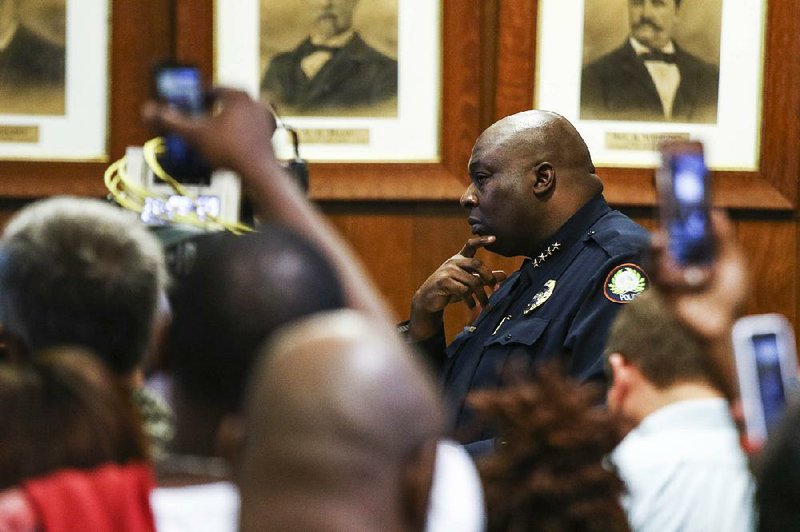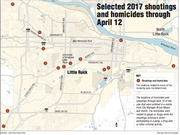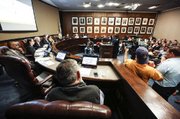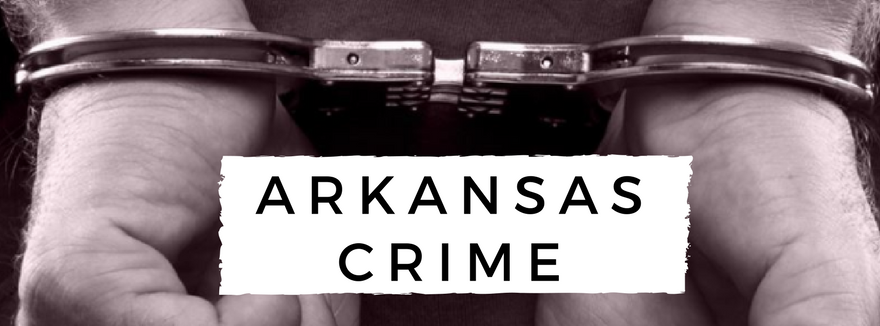Police have suspects in several recent shootings but can't arrest them because of a lack of cooperation from witnesses, Little Rock Police Chief Kenton Buckner told city officials Sunday.
Buckner and city leaders said an uptick in violent crime that started in the fall and carried into the new year is mostly back-and-forth retaliation between two rival groups.
"You'll have individuals who are family members of the [victim] who is either deceased or shot, who can be shot in broad daylight in a room like this, and no one has seen anything," Buckner said at a specially called Sunday meeting of the Little Rock Board of Directors. "Then that same group of people will say: 'What are y'all going to do about that shooting? Why haven't y'all picked up that guy yet?' -- Well, why haven't you come in and given a statement?"
When officers got to a hospital to investigate someone shot, the "universal response is 'Get the f out of here. I'm not going to talk to you,'" Buckner said.
He said he understands that there are sometimes repercussions for talking to police but that witnesses can use the anonymous call line or simply give police a name of someone officers should check into.
There have been 20 homicides in Little Rock so far this year, compared with nine over the same period last year. Through Friday, 57 shootings in Little Rock this year have injured 71 people. In that same time period last year, there were 31 non-fatal shootings and 32 victims.
In Little Rock, violent crime overall is up as compared with the same period last year. Preliminary police data show 1,080 violent crimes from Jan. 1 to April 24, a 19 percent increase compared with the same time period in 2016.
In response to the increased violence, the Police Department started a Violent Crime Apprehension Team three months ago.
The unit has 12 officers and three supervisors who target people and areas known to be heavily involved in violent crime. Since its start, the unit has made 210 arrests that resulted in 474 felony charges, 329 misdemeanor charges, 41 weapons seized and 17 stolen vehicles recovered.
After three shootings last week, two of which were fatal, Buckner decided to add 10 more officers to that team.
"I understand we've got some pretty good ideas on who these suspects are, and I hope we can focus and target those individuals," Mayor Mark Stodola said.
Even with the team's additional staffing, the Police Department needs the public's help, Stodola said.
There's a $40,000 reward for information leading to the arrest in the November death of 2-year-old Ramiya Reed. Officials say her killing sparked the violence that is continuing.
Buckner met with city leaders for three hours Sunday. More than 150 people -- including police officers, local politicians, city workers and citizens -- gathered in the boardroom to listen.
The public will have an opportunity to address the board in regard to the violence at a reconvened meeting at 5 p.m. Tuesday in City Hall.
RESURGENCE OF GANGS?
Many Little Rock residents want to know if gang violence is on the rise and if it will reach the level it did in the 1990s when the city became notorious after HBO did a documentary called Gang War: Bangin' in Little Rock in 1994.
At Sunday's meeting, Buckner said that while the city does have a gang problem, the term "gang" doesn't mean the same thing it did in the past.
"The dynamics in the '90s, you had gang colors very pronounced, illuminated. You had it very territorial. ... The primary source of income was drugs and weapons. That's the old model," Buckner said.
Today, people who were put in prison 20 years ago are getting released and joining their teenage family members who are "growing up in that scene."
"The ties are still there, but there are no boundaries. It's no longer associated with this group has to stay in this area," Buckner said.
Nowadays, one gang will be affiliated with the Crips and another gang with the Bloods, yet they will work together on a shared goal of robbing a liquor store, the chief said.
By all accounts, crime in Little Rock is not at the level it was in the 1990s.
In 1989, violent crime in the city rose from the low 3,000s to 3,714. And by 1991, there were 5,291 violent crimes reported. The number held steady in the 5,000s and 4,000s until dropping to 3,699 violent crimes in 1995 and finally 1,845 violent crimes in 1999.
The Little Rock police force quadrupled in the mid-'90s to eradicate gang violence.
By 2004, violent crime totals were back in the 3,000s. In 2016, there were 3,066 violent crimes reported in Little Rock, slightly up from the previous year and up even more from the five-year low of 2,252 reported in 2014.
Violent crimes include homicides, robberies, rapes and aggravated assaults. In earlier years, manslaughter was included in the homicide totals.
From the rise in gang violence in Little Rock in 1989 until 1995, the city averaged 51 homicides per year. The high was 68 homicides in 1993.
With 20 killings so far this year, Little Rock is on track to reach 60 homicides by year's end.
Homicides averaged 30 per year from 1996-2001, when they started to pick up again. From 2002-08, there were an average of 45 homicides per year.
The trend dropped after that. From 2009-16, Little Rock averaged 33 homicides a year.
"PERCEPTION IS REALITY"
The perception is that there's an increase in violent crime, City Director Lance Hines said Sunday.
"We have to combat what people are seeing on the 5 o'clock and 10 o'clock news," he said.
Access to information plays a part in that perception, Buckner said.
"Social media makes it instant. When you have a shooting, everybody hears about it. So, it feels like the sky is falling every day," Buckner said.
Ward 6 City Director Doris Wright said citizens are frightened and wondering why police don't implement a "zero tolerance policy."
Zero tolerance has unintended consequences, the chief said. If police issue a citation to everyone with a broken taillight, then they are introducing those people into the criminal justice system, causing people in poverty to have to pay fines they can't afford and crimes still aren't being solved.
"We do need a sense of urgency, but we need to base that upon data. It needs to be based on [the criminal.] We need to make his life a living hell without impacting these people who have nothing to do with the problem," Buckner said.
The Little Rock Fraternal Order of Police has sounded off on Facebook in recent days in response to reports of shootouts and drive-by shootings by saying the problem is the lack of a fully-staffed police force.
The department is authorized to have a sworn staff of 593 officers. On Sunday, 65 of those positions were vacant. Eighteen new recruits were in training. The city has ramped up its recruiting efforts, and changed its interview and hire processes to be able to hire qualified officers more quickly.
But, Buckner stressed that police can't solve the problem. He said poverty has to be addressed. There have to be legitimate job opportunities available. Parents have to get involved, and citizens have to fight back when a liquor store wants to go in next to an elementary school.
"If you gave me 500 more police officers and I put them on every corner you ask me to put them on, we still are going to have crime in Little Rock," Buckner said. "Giving us 100 more officers is not the sole response we need to have to these issues. ... The people most affected have to have a significant role in the solution."
COMMUNITY RESPONSE
Before Sunday's meeting in City Hall, activists and state leaders gathered at the Christ Episcopal Church in Little Rock to discuss illegal guns and to brainstorm about solutions of their own.
They talked about the causes of crime, discussed providing jobs to young people and spoke about the importance of a quality education. Others stressed that political solutions, while helpful, cannot be the sole effort in reducing crime overall.
"There's no reason a 14-, 15-, 16- or 17-year-old kid [should] have a gun on the street," Rev. Benny Johnson, founder of Arkansas Stop the Violence, said as he addressed about 30 people in the room.
The group spoke about advocating for a gun-buyback program to reduce the number of illegal firearms in the city.
But when asked about it at the board meeting, Buckner said buyback programs do not work. Criminals don't participate, he said, because they need a gun to protect themselves or to commit crimes.
Little Rock police have worked with federal authorities in the past to arrest convicted felons who had guns.
In February, authorities announced the indictment of 41 convicted felons on federal firearms charges, and praised a U.S. Department of Justice program for changing the way local agencies like Little Rock's interact with federal authorities. A total of 38 of the people indicted were from Pulaski County.
Information for this article was contributed by Scott Carroll of the Arkansas Democrat-Gazette.
A Section on 05/01/2017



